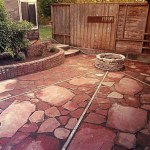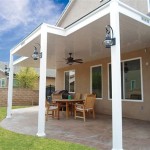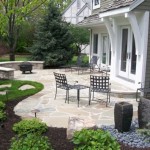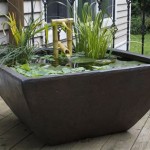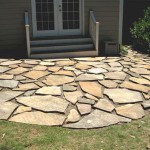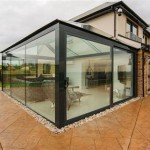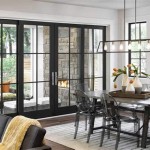Creating Your Perfect Flat Roof Patios And Decks With Wood
Flat roof patios and decks can be a wonderful addition to any home, providing an extra living space that can be enjoyed year-round. However, creating a functional and beautiful patio on a flat roof can present unique challenges, particularly when using wood. Wood is a popular material for patios and decks due to its natural warmth and versatility, but it requires careful planning and construction to ensure it remains durable and safe in a rooftop environment.
This article outlines key considerations for creating a flat roof patio using wood, focusing on structural integrity, weatherproofing, drainage, and design aesthetics. By understanding these factors, homeowners can achieve a stunning and long-lasting patio space that enhances their living experience.
Structural Integrity: Building a Solid Foundation
The foundation of a flat roof patio is paramount to its longevity and safety. Wood, while strong, requires proper support to withstand the weight of the structure, furniture, and occupants. The first step is to ensure the existing roof structure can safely accommodate the weight of the proposed patio. This may involve consulting a structural engineer to assess the roof's load capacity. If the existing structure is inadequate, reinforcement might be necessary through additional beams, columns, or other structural elements.
Once the structural integrity of the roof is confirmed, the next step is to create a stable base for the wood decking. Typically, this involves installing joists and beams directly onto the roof deck, creating a level platform onto which the decking planks will be attached. The joists should be spaced appropriately to ensure adequate support and prevent sagging, with the specific spacing determined by the type of wood used and the weight it will bear.
Weatherproofing: Protecting Against the Elements
Flat roofs are particularly vulnerable to water damage due to their horizontal orientation. This makes weatherproofing a crucial consideration for any flat roof patio project. The first step is to ensure a waterproof membrane is properly installed on the existing roof deck. This membrane acts as a barrier against rainwater, preventing leaks and water damage. The membrane should be chosen carefully, considering the local climate, the type of roof, and the anticipated load from the patio.
Next, the wood decking material itself needs to be protected from moisture and weathering. This can be achieved through careful material selection and the application of appropriate coatings. Wood species known for their natural resistance to decay and moisture, such as cedar, redwood, or tropical hardwoods, are ideal choices. However, even these woods benefit from protective treatments, such as stains, sealants, and preservatives. These coatings help repel water, prevent fungal growth, and preserve the wood's natural beauty.
Drainage: Managing Water Runoff
Effective drainage is essential to prevent water accumulation on the flat roof patio. Poor drainage can lead to water damage, mold growth, and safety hazards. The patio design should incorporate features that facilitate water runoff, such as a slight slope or drainage channels. The slope should be gradual, guiding water towards drainage points where it can be safely collected and directed away from the building. The drainage points should be designed to handle the expected volume of water, preventing overflows and flooding.
It is also important to consider the surrounding area during drainage design. The water runoff from the patio should be directed towards an existing drainage system or a designated area that can safely accommodate the water without causing issues for neighboring properties.
Design Aesthetics: Creating a Beautiful Outdoor Living Space
Wood, with its natural beauty and texture, allows for great design flexibility when creating a flat roof patio. The choice of wood species, its finish, and the decking pattern can significantly influence the overall aesthetic of the patio. For example, a rustic, weathered look can be achieved with reclaimed wood, while polished hardwoods can create a sleek and modern feel.
The design should also consider the function of the patio. Will it be a space for dining, lounging, or entertaining? The size, configuration, and features of the patio should be planned to meet the designated purpose. For example, a patio designed for dining might include a built-in table and seating, while a lounging patio might feature comfortable chairs, a fire pit, or even a small hot tub.
Finally, landscaping can enhance the aesthetic appeal of a flat roof patio. Trees, shrubs, and flowers can create a lush and inviting atmosphere, while also providing shade and privacy. The choice of plants should be informed by the local climate and the prevailing conditions on the roof.
Creating a flat roof patio with wood requires meticulous planning and attention to detail, focusing on structural integrity, weatherproofing, drainage, and aesthetic considerations. By adhering to these principles, homeowners can realize a stunning and functional outdoor space that enhances their living experience and complements their home's design.

Flat Roof With Deck Your Ultimate Guide To Elevated Outdoor Living

Modern Flat Roof Patio Designs And Tips For Homeowners

49 Rooftop Deck Ideas That Top Them All

Rooftop Deck Construction Considerations Design Ideas

38 Stylish Deck Roof Ideas For A Perfect Outdoor Retreat Patio Design Pergola Designs Backyard
How To Install A Deck On Flat Roof

Flat Roof With Deck Your Ultimate Guide To Elevated Outdoor Living

Building A Deck On Flat Roof

Covered Deck Ideas To Reinvigorate Your Space Timbertech

Rooftop Deck Construction Considerations Design Ideas
Related Posts

